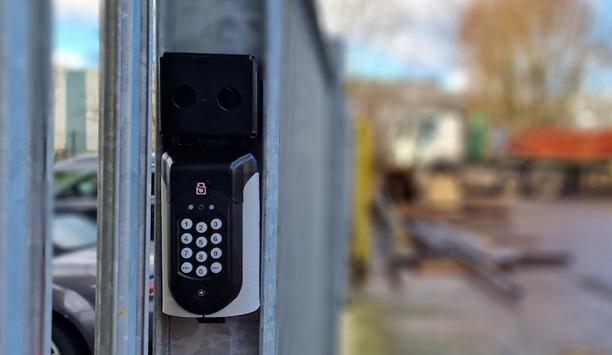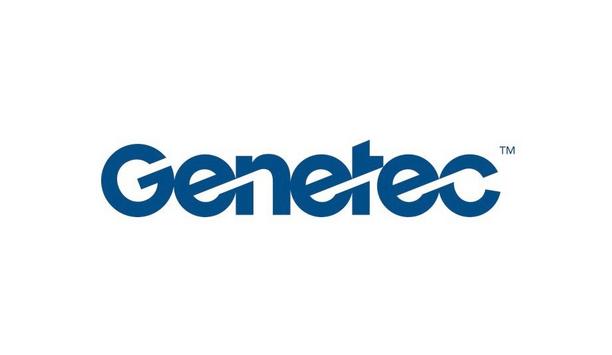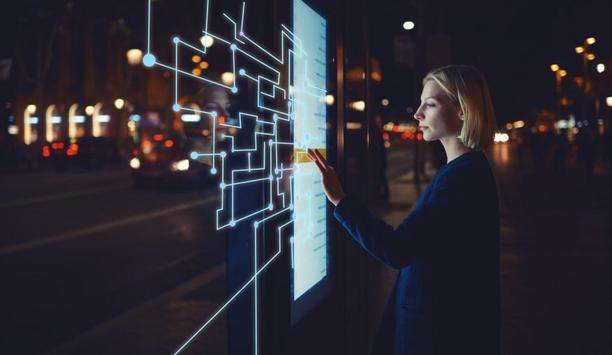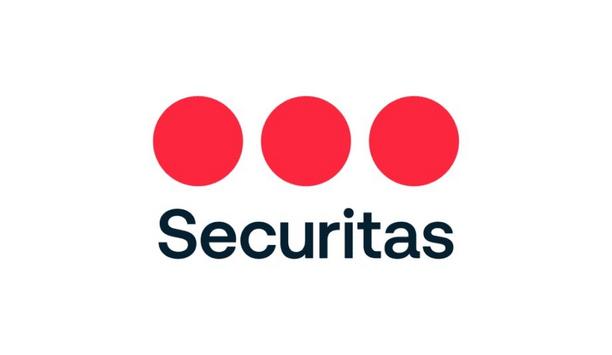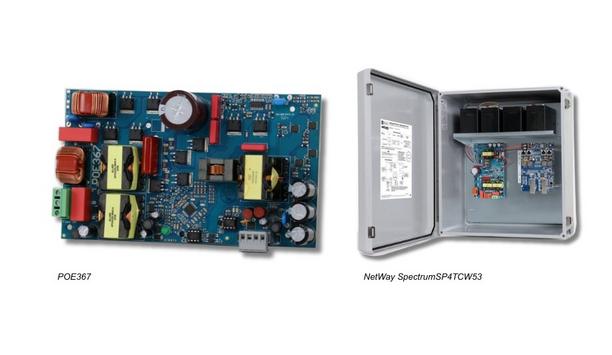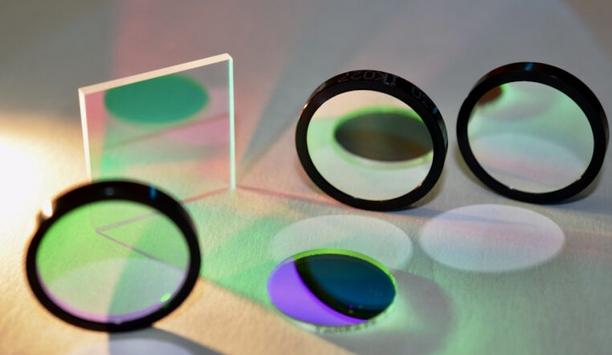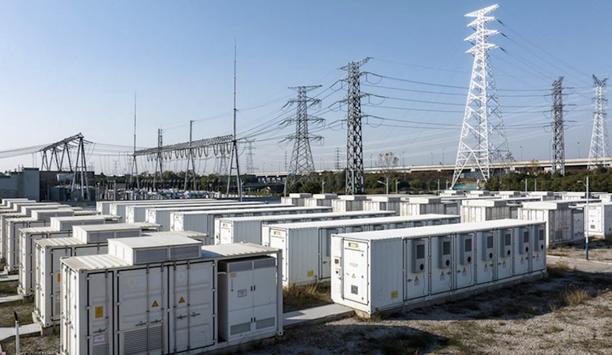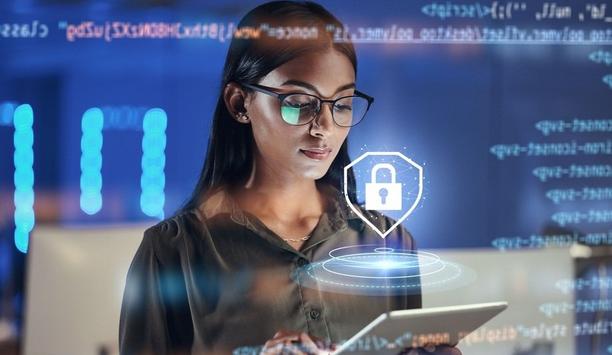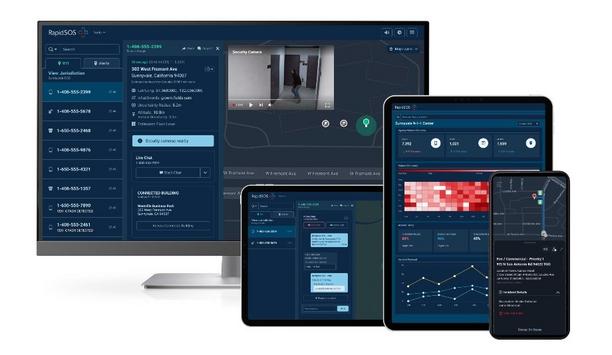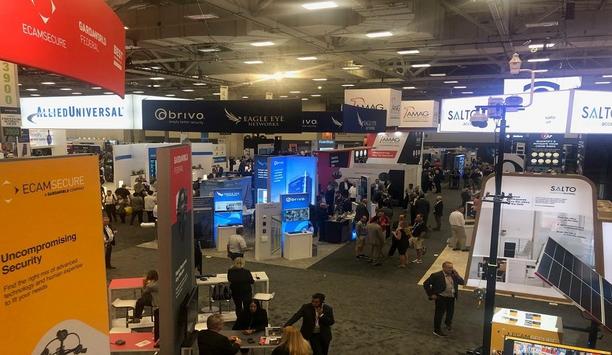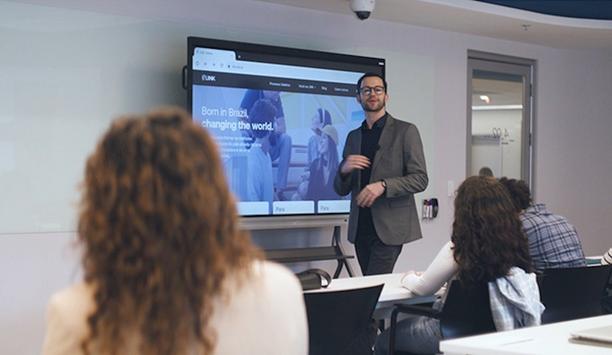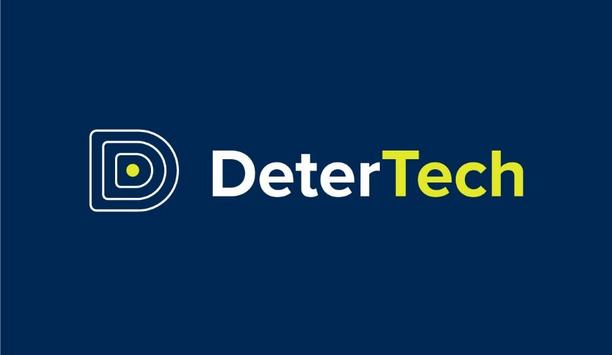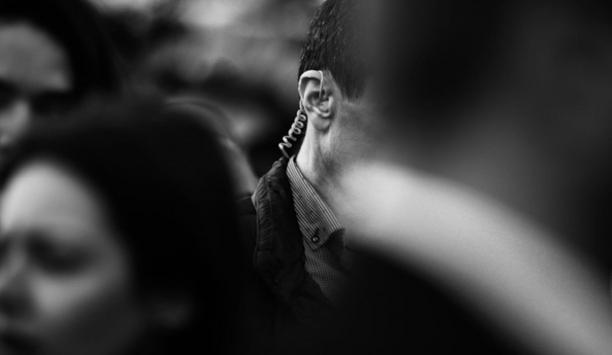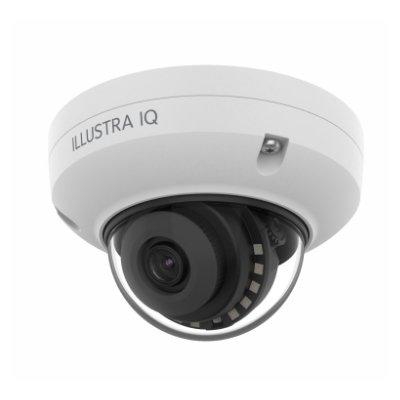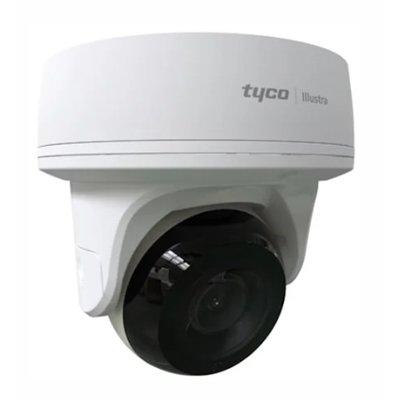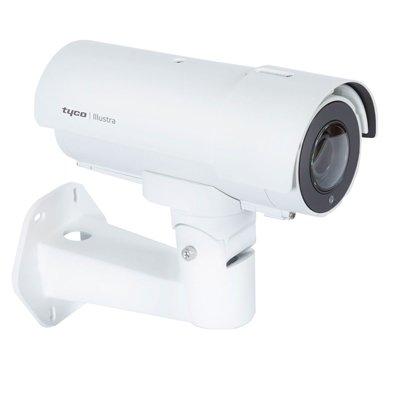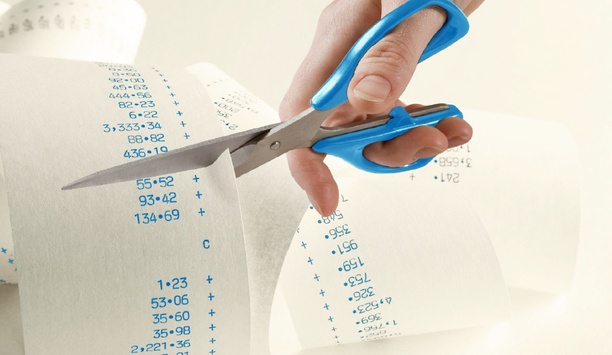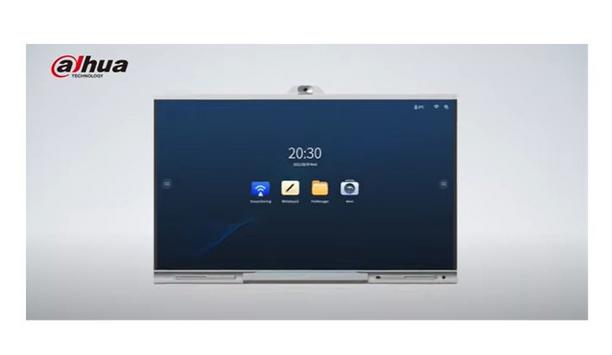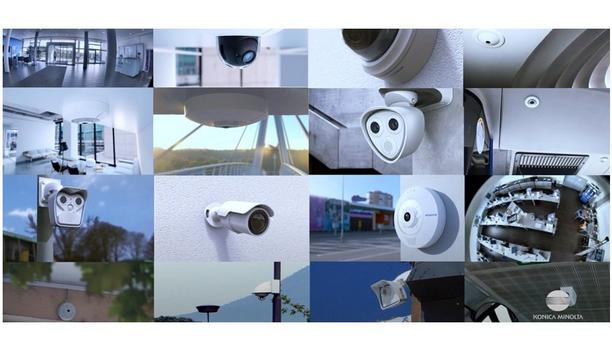Green security
Balancing operational efficiencies and customer satisfaction with costs, resources, and legislative obligations is a challenge faced by every security services provider offering keyholding and alarm response. While mobile security operations must adhere to strict compliance, with BS 7984 standard and SIA licensing for guards at the very core of the operations, security providers are increasingly contending with a wider range of regulations. Among the most pressing are sustainability requirement...
VIVOTEK, a global security solution provider, continues to deepen its commitment to sustainability and has been recognized with two distinctions at the 18th Taiwan Corporate Sustainability Awards: the Silver Award for Sustainability Report for the Information, Communication, and Broadcasting Industry and the Taiwan Corporate Sustainability Excellence Award. Facing the challenges of net-zero and climate change, VIVOTEK continues to strengthen its ESG actions by gradually completing its global c...
End-users, security professionals and C-suite strategists continue to see significant rewards in access digitalization. The most important factor, according to ASSA ABLOY’s survey data, is convenience. When employees, contractors and temporary visitors can come-and-go with ease, operations for building and security managers are made more efficient, including cost-efficient. Wireless solutions are often the fastest, simplest way to digitalize. Adopters cite reduced installation costs, easi...
According to the newly released 2025 Access Control Report from global research firm Omdia, Genetec Inc., the pioneer in enterprise physical security software, continues to expand its share of the global access control software market, maintaining its #2 position worldwide. In an industry shaped by mergers and acquisitions, the report shows that Genetec achieved the highest organic global market share gain in on-premises access control software. For customers, partnering with a c...
Gunnebo Safe Storage has published a new white paper titled Embedding Sustainability into Business: From Principles to Practice, which examines how organizations can move beyond regulatory compliance to fully integrate environmental, social and governance principles into their operations. The downloadable white paper addresses the need for businesses to respond to climate change, evolving legislation and rising expectations from stakeholders. It explores how sustainability can be embedded acros...
Multiple technology trends are transforming the physical access control market. There is a fundamental shift away from physical cards and keys toward digital identities — mobile credentials, digital wallets, biometrics, and cloud-native access platforms. These next generation access solutions are radically reshaping how buildings operate, protect staff, and perform functionally. At the same time, AI and analytics solutions are being layered onto these physical access control systems to su...
News
The 5th World Congress of Biosphere Reserves (WCBR) officially commenced on September 22 in Hangzhou, China, marking its historic Asian debut organized by the United Nations Educational, Scientific and Cultural Organization (UNESCO). As the largest gathering under UNESCO’s Man and the Biosphere Program, the Congress brings together thousands of experts from over 150 countries to explore innovative ways to shape a sustainable future for people and nature. During the Congress, Hikvision presents its integrated portfolio of ecological and biodiversity protection technologies and achievements, highlighting its unwavering commitment to nature conservation and sustainable development. Ecological and Biodiversity Protection: Hikvision’s Global Impact Hikvision has persistently donated to ecological and biodiversity safety by providing pioneering AIoT Hikvision has persistently contributed to ecological and biodiversity protection by providing pioneering AI-powered Internet of Things (AIoT) products and solutions in diverse scenarios, including but not limited to forest protection, migratory birds protection, wildlife habitats restoration, and marine ecosystems preservation. This contribution towards ecological sustainability is recognized by WCBR. On September 23, in the Parallel Meeting: Sustainable Development of Urban Wetlands, Ms. Wang Liang, Director of Natural Resources Industry, demonstrated how Large-Scale Models advance smart wetland conservation. Hikvision's ecological protection technologies Liang emphasized that "Hikvision provides innovative solutions to protect global wetlands and biosphere reserves, such as empowering wildlife observation, supporting the development of knowledge hubs, and assisting in wetland management." To date, Hikvision's ecological protection technologies are actively applied within more than 15 UNESCO-recognized World Biosphere Reserves across China. Based on its evolving AIoT capabilities, Hikvision remains dedicated to safeguarding the world's natural treasures and advancing sustainable development goals. Upholding "Tech for Good": A steady loyalty to thriving biodiversity Hikvision has collaborated with over 30 non-profit organizations globally across 14 countries and regions As a responsible global corporate citizen, Hikvision always upholds its mission of "Tech for Good," actively exploring ways to create more social value. This commitment is reflected in Hikvision's STAR Program for Social Good. Launched in 2020, the Program aims to provide cutting-edge technologies to help non-profit organizations and projects explore innovative ways to benefit communities and protect the valuable wildlife and nature worldwide. Within its exhibition area, Hikvision showcases a rich collection of its wildlife conservation stories: From bar-headed geese in the sky to giant pandas on the land, from pangolins in mountains to snow leopards in highlands, from African rhinos to Malaysian coral reefs. By the end of 2024, Hikvision has collaborated with over 30 non-profit organizations globally across 14 countries and regions, inspiring a better future for the shared planet. Innovate in advanced technologies Hikvision’s participation in the 5th World Congress of Biosphere Reserves demonstrates its deep commitment to the THRIVE sustainability philosophy, with a focused area on protecting nature through technological innovation. Looking ahead, Hikvision will continue to innovate in advanced technologies, foster global partnerships, and strive for a future where all lives prosper and thrive.
Magenta Security Services is pleased to announce that Managing Director - Abbey Petkar has been selected as a candidate for the S12, a new leadership group for the security sector. Abbey’s record in environmental stewardship, ESG performance, and community investment makes him a strong fit for the role and its focus on responsible industry leadership. Voting for the S12 opened at 10 am on Tuesday 23 September 2025 and is available through the dedicated microsite at website. Only ACS-approved companies are eligible to vote, with one registered representative per company, ideally the most senior executive. Abbey's leadership across Magenta Abbey has championed sustainability across Magenta for many years, embedding environmental performance into operations, supply chain choices, and client partnerships. Magenta has also invested in programs that build stronger local communities, including skills development Under his leadership, the company has prioritized measurable carbon reduction, energy efficiency, and continuous improvement, while promoting fair work, inclusion, and transparent governance as part of a clear ESG roadmap. Magenta has also invested in programs that build stronger local communities, including skills development, youth outreach, and ongoing support for charities and education partners. Reliability and resilience “Security keeps people, places, and businesses safe, and it should also create positive outcomes for society and the environment,” said Abbey Petkar. Abbey Petkar adds, “If selected to serve on the S12, I will champion practical, evidence-based action on sustainability and social value, work to raise standards across the supply chain, and ensure the voice of small and medium-sized businesses is heard alongside the largest providers. My commitment is to help the sector deliver reliability and resilience, while leaving a lighter footprint and a stronger legacy in the communities we protect.” Leadership in ESG and community outcomes The S12 cohort will be formally announced by the Security Minister, Dan Jarvis, at International Security Expo on 1 October at Olympia London. Now in its thirtieth year, Magenta Security Services continues to invest in people, technology, and sustainable operations in order to deliver dependable, value-focused security for clients across the United Kingdom. Abbey’s candidacy reflects the company’s belief that leadership in security must be matched by leadership in ESG and community outcomes. ACS-approved companies can register a single voter and cast their ballot via the S12 microsite.
Securitas, the intelligent security solutions partner with world-pioneering technology and expertise, announced an ambitious sustainability strategy aimed at helping clients achieve their goals, while creating measurable value for the business. The new sustainability strategy is built on three powerful pillars: develop people, decarbonize business, and demonstrate integrity. These commitments will enhance efficiency, retention, and trust, ensuring the quality and reliability clients can depend on for the long term. Developing people Securitas will explore how to implement a living wage framework in collaboration with clients Securitas is dedicated to helping its people succeed by focusing on well-being, creating high-performing teams, and investing in growth and development. To further strengthen retention and long-term value creation, Securitas will explore how to implement a living wage framework in collaboration with clients. “When people thrive, performance follows,” says Magnus Ahlqvist, President and CEO of Securitas, adding “That is why, in close partnership with our clients, we are taking a measured, step-by-step approach to explore how a living wage framework can turn into practical solutions that boost retention, service quality, and long-term value.” Decarbonize business Securitas’ long-standing commitment to reducing environmental impact has provided lasting benefits for their clients, their people, and the planet. Building on SBTi-validated targets that already cover the entire business, Securitas will now expand product-level carbon data to services. Scheduled for release in 2027 is a new feature that provides clients with information on the carbon emissions associated with their security services, including guarding and remote monitoring. This initiative builds on progress already underway at Securitas Technology, which now incorporates greenhouse-gas emissions data into all new proposals in the U.S. and Canada. By 2030, the aim is for 70% of all new technology sold to include carbon data. Activity-based carbon data Securitas’ climate targets are validated by the Science Based Targets initiative (SBTi) “Clients are increasingly asking for activity-based carbon data to support their own emission reduction goals,” says Sune Chabert Larsen, Chief Ethics and Sustainability Officer at Securitas. Sune Chabert Larsen adds, “By extending the same transparency already provided for products to services, Securitas gives clients the insights they need to make climate-conscious and cost-effective decisions.” Securitas’ climate targets are validated by the Science Based Targets initiative (SBTi), committing to reducing absolute Scope 1, 2, and 3 emissions by 42% by 2030 from a 2022 base year. Demonstrating integrity Guided by integrity, vigilance, and helpfulness, Securitas is dedicated to fostering a culture where doing the right thing builds lasting trust and creates long-term value. This strengthened strategy raises the bar by aiming for more than 95% effectiveness in compliance controls across all markets, evaluated through testing and audits, while ensuring that 100% of business leaders actively promote ethics with tone at the top and maintain a zero-tolerance policy on breaches. “For me, sustainability is about doing the right thing,” said Magnus Ahlqvist, President and CEO of Securitas, adding “Done well, it creates real value for our clients and for Securitas. We put sustainability at the heart of growth, so we can deliver solutions that are responsible, resilient, and built for the long term.”
Altronix, the recognized pioneer in power and data transmission products for the professional security industry, has expanded its power product line with the new POE367 power supply/charger designed specifically for 277VAC input environments. The POE367 offers a robust and efficient solution for powering IP devices, integrating with NetWay Spectrum Hardened PoE Switches at remote or industrial locations where high-voltage 277V power is the only option. POE367 features The POE367 converts 208–277VAC input into a regulated 54VDC output The POE367 converts 208–277VAC input into a regulated 54VDC output, delivering up to 360W of continuous power. With integrated surge protection, LED indicators, and a built-in charger for sealed lead-acid or gel batteries, it ensures dependable operation and backup support in challenging environments. Altronix NetWay Spectrum Hardened PoE Switches “The POE367 expands our high-voltage product family and enables integrators to meet power requirements in environments that were previously difficult to service,” said Ronnie Pennington, Director of Sales for the Americas at Altronix. “Together with our NetWay Spectrum hardened switches, the POE367 provides a robust, field-ready solution for remote deployments in virtually any environment.” The POE367 integrates seamlessly with Altronix NetWay Spectrum Hardened PoE Switches, delivering power, data, and battery backup for a complete remote IP security solution. Like all Altronix power products, it’s backed by a lifetime warranty for long-term peace of mind.
MKS Inc., a global provider of enabling technologies that transform the world, announces the next generation of Newport™ ODiate® Fluorescence Filter Sets, an expanded filter portfolio that includes precision single-band optical filters as well as new multi-band optical filters designed for fluorescent imaging. The new DAPI/TRITC and FITC/Cy5 dual-band filters provide single-band filter-level signal performance in multi-band filters, allowing for the simultaneous detection of multiple fluorescent tags in a single sample. This means that when pairing alternating fluorophores, high-throughput passbands can be designed to deliver higher signal strength than can be expected with adjacent fluorophores. 4-channel multiplex imaging With just two measurements, the DAPI/TRITC and FITC/Cy5 sets can be used together to achieve 4-channel multiplex imaging with fluorescence results similar to single-band imaging filter sets. The new multi-band filter sets offer advantages in fluorescence microscopy, flow cytometry, and PCR applications. "Imaging OEMs and researchers are looking for options that produce bright, high-contrast images at an affordable price," said Dr. Glenn Mitchell, General Manager, Newport Components and Vibration Control. "The new ODiate multi-band fluorescence filter sets deliver exactly that. They simultaneously image multiple fluorophores in a single sample, enabling rapid, multi-color imaging. The entire ODiate family of single-band and multi-band filter sets is another example of MKS's commitment to advancements in the Life and Health Science field." fluorescent imaging systems The filter sets feature high % transmission, steep spectral edges, and deep OD A widely used technique in biology, biotechnology, and medicine, due to its extraordinary sensitivity, high specificity, and ease of use - occurs when a molecule absorbs light at wavelengths within its absorption band and then emits light at longer wavelengths within its emission band. Newport ODiate Fluorescence Filter Sets, which include emitter, exciter and dichroic filters, are optically designed to deliver optimal imaging responses from some of the most common fluorophores used in fluorescent imaging systems. The filter sets feature high % transmission, steep spectral edges, and deep OD, enabling high image quality and low signal to noise ratio in fluorescent imaging systems. Newport ODiate fluorescence filter sets Newport ODiate Fluorescence Filter Sets utilize proprietary thin film coating technology to provide precision, durable optical filters. The filters are fabricated at industry-standard dimensions that make them compatible with filter cubes from all major manufacturers. Individual single-band filters as well as filter sets are targeted at common fluorophores: DAPI, TRITC, GFP, FITC, Texas Red, and Cyanine (CY3.5). The new dual-band sets are offered for DAPI / TRITC and FITC / Cy5. All ODiate filter sets are designed to produce bright, high-contrast images and to maximize signal-to-noise ratios. The filter sets are ideal for fluorescence microscopy or fluorescence imaging applications. Additionally, they can be utilised in polymerase chain reaction (PCR) diagnostic instruments. Customization options MKS is recognized as a pioneer for precision optical systems for highly functioning optical systems. MKS also works with customers at the application and system level to design and manufacture custom-designed optical filter systems that meet or exceed system requirements, following fluorophore usage trends, light source innovations, and detector enhancements. The company can supply optical filters at the individual component level or as part of an integrated optical sub-assembly.
Battery Energy Storage Systems (BESS) are revolutionizing the way they power the world, acting as the source that keeps renewable energy flowing even when the sun isn’t shining or the wind isn’t blowing. As the backbone of modern energy infrastructure, BESS plays a crucial role in balancing supply and demand. However, with the increasing adoption of large-scale battery storage comes the responsibility for manufacturers, site managers, and regulators to manage its risks effectively. Thermal runaway in battery storage Much like an electrical surge that fries a circuit, thermal runaway rapidly escalates, putting lives Thermal runaway is the equivalent of a system overload. It’s a dangerous chain reaction in which an overheated battery cell loses its stability and begins to ignite its neighbors, setting off a firestorm that’s incredibly difficult to contain. It's of particular concern when dealing with lithium-ion batteries used in products such as electric vehicles, portable electronics, and grid-scale storage. Much like an electrical surge that fries a circuit, thermal runaway rapidly escalates, putting lives, infrastructure, and energy security at risk. Key factors cause a dangerous phenomenon Several factors can cause this dangerous phenomenon to ignite, including: Overcharging or overdischarging: Pushing a battery beyond its limits can cause excessive heat buildup, leading to system failure. Physical damage or manufacturing defects: Cracks, punctures, or design flaws can create weak links in the chain, making failures more likely. Environmental conditions: Exposure to high temperatures or external heat sources can turn a stable BESS into a ticking time bomb. Adoption of BESS units The fallout from a BESS fire can be severe, resulting in massive financial losses, grid instability The fallout from a BESS fire can be severe, resulting in massive financial losses, grid instability, and environmental harm. And when they consider that these storage units are often installed near other high-energy infrastructure, the potential for disaster multiplies. With the adoption of BESS units ramping up across the globe, soaring by more than 50% in 2024 alone, the potential risks must be managed in a way that safeguards workers, critical assets, communities, and the environment. Stop the Spark Before it Starts: The power of thermal monitoring The best way to prevent thermal runaway is to detect heat anomalies before they escalate. But without the right monitoring tools in place, operators are left in the dark, often unaware of hidden dangers until it’s too late. The best way to prevent thermal runaway is to detect heat anomalies before they escalate That’s where thermal imaging technology plays a pivotal role. By offering continuous, real-time temperature surveillance, advanced thermal imaging can alert personnel to dangerous situations as they being to develop, so that no hot spot beyond specifications goes unnoticed. Like a circuit breaker that prevents an electrical overload, thermal monitoring acts as a failsafe, allowing site managers to catch and address overheating batteries before they ignite. Energizing safety: What makes a thermal monitoring system? To truly keep BESS operations running smoothly without the risk of meltdown, thermal monitoring systems must offer: High-resolution imaging: The ability to detect even the slightest temperature variations across battery stacks, ensuring no heat anomaly slips through the cracks Wide field of view: Comprehensive coverage that leaves no blind spots, just as a well-designed electrical grid leaves no home without power Advanced analytics: Smart detection technology that filters out false alarms caused by reflections, weather, or routine human activity 24/7 real-time monitoring: A non-stop watchdog that never sleeps, ensuring site managers stay wired into potential risks at all hours. With 640 × 480 thermal resolution, FSX® (Flexible Scene Enhancement) technology, on-the-edge analytics, and offered fields of view up to 80°, FLIR’s industry-pioneering A500f/A700f Advanced Smart Sensor camera is key to ensuring site owners' valuable peace of mind. Powering a safer future BESS technology is charging ahead, and with it, the responsibility to keep energy storage systems safe and stable. If left unmonitored, thermal runaway could pull the plug on renewable energy progress, jeopardizing the benefits of grid resilience, sustainability, and energy security. By integrating cutting-edge thermal imaging into BESS infrastructure, operators can stay ahead of the curve, preventing small temperature fluctuations from sparking massive disasters. Because in the high-stakes world of energy storage, early detection isn’t just a bright idea it’s the only way to keep the power on.


Expert commentary
In the ever-evolving struggle between cyber offense and defense, attackers have almost always moved first. In the emerging domain of artificial intelligence, this pattern appears to be repeating itself. Yet, global cybersecurity pioneers appear disconcertingly disengaged. Just over half even agree that AI-driven attacks are set to become dramatically more complex and widespread. Equally concerning is the widespread apathy regarding AI’s role in expanding an already sprawling corporate attack surface. This is no small oversight. A recent global Trend Micro study showed that 73 percent of organizations have already suffered cybersecurity incidents due to unknown or unmanaged assets. In an era where digital blind spots are both common and consequential, hesitation is a risk few can afford. Security has to shift from reactive protection to proactive risk exposure management. The opportunity and the risk of AI Threat actors are now using jailbroken versions of legitimate generative AI tools such as ChatGPT The potential for AI to transform enterprise operations is enormous, but so is the risk. The warnings have been loud and clear. As early as the first quarter of 2024, the UK’s National Cyber Security Center (NCSC) stated that AI would “almost certainly increase the volume and heighten the impact of cyber-attacks over the next two years.” Their prediction is proving accurate. Threat actors are now using jailbroken versions of legitimate generative AI tools such as ChatGPT, freely traded as services on the dark web, as well as malicious models like FraudGPT, built on open-source large language models (LLMs). These tools are no longer just about automating tasks; they are turbocharging the entire attack lifecycle. From more convincing phishing emails and precise target selection, to sophisticated malware creation and lateral movement within breached systems, AI is driving a step-change in threat actor capability. Integrating open-source models However, this is only one side of the coin. The other, often overlooked, is AI’s impact on the corporate attack surface. Even well-meaning employees can unintentionally expand organizational risk. The widespread use of AI-as-a-service tools like ChatGPT introduces significant shadow IT concerns, especially when sensitive business information is input without proper oversight. Data processing and storage practices for many of these services remain opaque, raising additional compliance concerns under regulations like the UK GDPR and the EU’s AI Act. For those organizations that choose to build or customize their own LLMs, the risks multiply. Integrating open-source models may expose businesses to vulnerabilities, misconfigurations and flawed dependencies. Each new tool and environment adds to the complexity of an attack surface already strained by remote work setups, sprawling cloud deployments, IoT ecosystems, and accelerating digital transformation programmes. Managing the expanding risk landscape Many have already shared security incidents where a lack of asset visibility was the root cause Many security pioneers do understand what is at stake. Nine in ten agree that effective attack surface management is tied directly to business risk. They cite a long list of potential consequences, disruptions to operations, reputational damage, declining competitiveness, strained supplier relationships, financial losses and reduced staff productivity. Many have already experienced security incidents where a lack of asset visibility was the root cause. Despite this recognition, however, the response remains largely inadequate. Fewer than half of global organizations use dedicated tools to monitor their attack surface proactively. On average, only a quarter of cybersecurity budgets are allocated to managing cyber risk exposure. Third-party risk management is similarly neglected: fewer than half of firms actively monitor their vendors for vulnerabilities. This inertia creates an obvious contradiction. Security pioneers understand the business implications of unmanaged risk, but they are not equipping themselves with the tools or processes to respond. That needs to change—and fast. How AI can help defenders take the lead There is good news: AI is not only a weapon for cybercriminals. It can also be a powerful ally for defenders, particularly in the field of Cyber Risk Exposure Management (CREM). The best tools in this category use AI to continuously scan an organization’s entire digital footprint. They can automatically detect vulnerabilities, spot misconfigurations, identify rogue or shadow assets, and provide prioritized remediation recommendations. CREM platforms apply contextual filtering to reduce false positives and elevate the most urgent threats Intelligent algorithms can also analyze network behavior to identify anomalies that could signal a breach in progress. Unlike traditional tools, which often drown analysts in noise, CREM platforms apply contextual filtering to reduce false positives and elevate the most urgent threats. For overburdened security teams, this enables a far more focused and effective response. However, the keyword here is “continuous.” The nature of today’s IT environments, especially in the cloud, is dynamic and fast-moving. Assets appear and disappear within minutes. Static, point-in-time assessments are no longer sufficient. Yet more than half of organizations still lack continuous scanning processes. This leaves them exposed to risks that might persist undetected for weeks or months. Overcoming barriers to adoption So what is holding organizations back? In many cases, it’s not the technology itself but the internal politics of investment. Security pioneers interested in CREM tools often prioritize real-time alerting, clear dashboards, and seamless integration with their existing environments. All of this is now achievable. The challenge lies in securing board-level support. Many security teams still work in silos, disconnected from the broader business Boards are often cautious when it comes to cybersecurity investment, particularly when immediate ROI is not clear. To gain their trust, security pioneers must learn to speak the language of business risk, not technical threat. They must frame cyber exposure in terms of reputational impact, regulatory liability, operational continuity, and investor confidence. There is also a cultural component. Many security teams still work in silos, disconnected from the broader business. This limits their influence and makes it harder to embed security as a strategic enabler. In the AI era, this divide must be bridged. Cybersecurity must become a board-level concern, and risk exposure must be treated as a fundamental operational issue. Time to act We are at a critical inflection point. The AI revolution is not on the horizon, it is already here. Threat actors are moving rapidly to exploit it, leveraging tools and techniques that were unthinkable just a few years ago. Meanwhile, organizations remain slow to respond. Too few are investing in the tools, processes, and people needed to manage their risk exposure effectively. AI can be used not only to attack but to defend. CREM tools powered by AI offer a powerful way to regain visibility, restore control, and build lasting resilience. They enable proactive rather than reactive security. And they help organizations align their cybersecurity strategy with their broader business objectives. Security teams have to elevate the conversation. They must advocate not just for new tools, but for a new mindset, one that treats cyber risk as an enterprise risk, and one that prioritizes continuous visibility as a prerequisite for resilience.
Artificial Intelligence isn’t just a buzzword anymore. It has become part of our lives, and its uses and applications are growing every other day. Even the public sector, which usually is a late adopter of new technologies, has come onboard this new train. Law enforcement, in particular, has seen the advantages different AI technologies can offer to their work and has started to integrate them into their workflow and daily routines. But there is much more to come. Task automation: AI as a workhorse Due to the increasing importance of media files in police investigations, current police cases have an increasing amount of digital files to be analyzed. Videos from mobile phones, computer files, sound recordings, voice messages from chat applications…the list is almost endless. But, in contrast to other types of digital files, like documents or PDFs, it is not possible to search directly a certain information in a video. It has to be watched by someone. And that takes an inordinate amount of time for a human being, as there can be hundreds of videos in a case. This is one of the areas where artificial intelligence shines. Modern analytics systems are able to find almost any kind of information in media files due to the improvement of artificial vision, object recognition and face biometrics. It is simply a matter of feeding the hundreds or thousands of media files to a AI analyzer, which will work through them and find specific sounds, words, faces, cars, etc. Case of law enforcement On top of that, an analyzer does not tire after long work hours and does not make errors What is more, unlike human officers, these systems can work 24/7 which speeds up investigations considerably, as more evidence is found in less time. On top of that, an analyzer does not tire after long work hours and does not make errors. This is why police work can be helped greatly by AI Analytics, as it frees police officers to do high value work, instead of endlessly watching videos on a computer of listening to audio recordings, in search of evidence. As soon as the system finds what the officer has specified (a face, name, number plate, object, etc.) it sends an alarm to the officers’ phone, so he or she can take a look and decide what to do with that information. Despite AI being touted as a danger to many workplaces, in the case of law enforcement, it is a valuable tool to help police do more, with more accuracy, and in less time, freeing officers from the repetitive and boring work of checking mountains of evidence in search of clues. The AI Analyzer landscape The field of AI analytics is expanding constantly and new types of analysis are being discovered that may be helpful to police or intelligence. The most used analyzers today are probably Automatic License Plate Recognition (ALPR), object and face recognition. But OCR is equally useful not just for reading documents, but also signs and logos that may appear in pictures or videos, to help identify a location. And for audio (as in interception or surveillance recordings) there is speech-to-text (S2T), translation, Speaker ID, audio fingerprinting (AFP) and natural language processing (NLP) which is able to extract sentiment from what is said. All of these have their application in daily police work and can save time in investigations or make them possible in the first place. But looming on the horizon are new possibilities, which we will discuss later and that are even more powerful. So the field of AI Analytics is, by no means, a closed one. Generative AI in law enforcement LLMs will be an important part in all those tasks related to investigate large sets of documents For the past year, the term “Generative AI” has become part of our general vocabulary, although most of the time we just say ChatGTP, Copilot o similar. The large language models (LLM) use Deep Learning and different AI strategies to, amongst other things, analyze and summarize vast amounts of information, in order to generate a short report with the highlights. This can be of use for Law Enforcement in all those cases that have great amounts of documents that may contain evidence. Again, this is a case like the above, where AI helps speed up operations by doing the grunt work much quicker than any person could. The difference is in the Deep Learning part. The model can be tuned to specific needs (like financial crimes, for example) and will get better over time when dealing with specific sets of documents. Thus, LLMs will be an important part in all those tasks related to investigate large sets of documents during a case. What the future holds As with all technology, it is virtually impossible to predict what the future will hold. Because any breakthrough can upend complete sectors, as demonstrated by ChatGPT not that long ago. However, there are several promising AI technologies in the pipeline, some of which are already being tested and perfect around the world: Behaviour analysis: as facial recognition systems get better and better, they are not only able to recognize faces, but also facial expressions. This means that AI systems could be assisting during interrogations, to evaluate the truthfulness of what is being said. Combined with the analysis of small voice inflections, they can be a non-invasive “lie detector”. Robotics: already in use by many police forces around the world, robots are going to be ever so important. Particularly the autonomous kind, which is able to do missions on its own, without a human behind the controls. This, combined with swarm technology, could be an incredible help in disaster areas, where time is of the essence in locating victims. Predictive policing: thanks to pattern analysis, predictive policing, which has been to the test several times already, will be an important part of police work, to figure out where to send units or concentrate surveillance efforts. In short, AI has much more to offer, and we are going to see and incredible evolution of this technology applied to law enforcement, over the next years.
March is Women in Security Month, a time dedicated to celebrating and promoting the contributions of women in the security field—particularly in cybersecurity. This observance aligns with Women’s History Month, providing an opportunity to reflect on the progress made and the work still needed to advance gender equity in security. evolving role of women in security The security industry has witnessed a steady increase in women's participation. According to ISC2 Research in its “Women’s Role in Filling the Workforce Gap” report, women make up an estimated 20 to 25 percent of the security industry. Promisingly, younger generations are entering the profession at higher rates, with 26 percent of working professionals under 30 identifying as women. The security industry has witnessed a steady increase in women's participation The research tells us that women are thriving in a variety of roles, from engineering and system administration to sales, marketing, and project leadership. Key factors driving this transformation include mentorship programs, male allies advocating for gender equality, and cultural shifts recognizing the unique perspectives and strengths women bring to security challenges. These efforts are fostering more inclusive environments and ultimately strengthening the industry. The value of diverse perspectives in security Security is not a one-size-fits-all industry—each organization and facility has unique needs that require varied perspectives. Greater representation of women has introduced fresh approaches to problem-solving, fostering collaboration and driving innovation. By integrating diverse viewpoints, security professionals can create more effective solutions that better address end-user needs. Industry support for women’s professional growth SIA's WISF offers subcommittees such as NavigateHER, SupportHER, and UpLiftHER Organizations like the Security Industry Association (SIA) and ASIS International have established networking platforms and initiatives to support women in security. Events such as the Security LeadHER Conference provide valuable professional development and networking opportunities. Companies are also investing in science, technology, engineering, and mathematics (STEM) initiatives, hands-on training, and recruitment programs to attract more women into the field. Additionally, SIA's Women in Security Forum (WISF) offers subcommittees such as NavigateHER, SupportHER, and UpLiftHER, which provide pathways for engagement and growth. Challenges women in security face Despite progress, challenges remain. Many women still feel it necessary to repeatedly prove their expertise, take on additional informal responsibilities, or carefully navigate workplace dynamics. Imposter syndrome can be another hurdle, even for accomplished professionals. However, women in security are addressing these challenges by setting boundaries, advocating for themselves, and supporting one another through mentorship. By excelling in leadership and technical roles, women are reshaping outdated perceptions and advocating for more inclusive workplace policies. Steps industry pioneers can take To further support women in security, industry pioneers could: Provide targeted professional development and career advancement opportunities. Foster strong, supportive communities that recognize and mentor women. Implement structured mentorship programs that connect experienced professionals with newcomers. Promote workplace flexibility to help employees balance personal and career commitments. Actively challenge biases and advocate for meaningful change within organizations. Advice for women entering the security field Here are key pieces of advice for women considering a career in security: Own Your Expertise – Have confidence in your knowledge and skills. Seek Out Mentors & Allies – Connect with supportive professionals who can guide your career. Build a Strong Network – Join organizations like ASIS Women in Security, SIA Women in Security Forum, or Women in CyberSecurity (WiCyS), and attend industry events to expand your connections. Speak Up & Take Space – Confidently share your ideas and challenge outdated norms. Develop Resilience & Advocate for Yourself – Push past biases, demand the respect you deserve, and negotiate for fair salaries and promotions. Keep Learning & Stay Ahead – Continually build your expertise to stay competitive in the evolving security industry. The future of women in security As the security industry evolves with technological advancements and global changes, opportunities for women will continue to expand. Women are not just participating in the industry’s growth—they are shaping its future. With growing mentorship programs, male allies advocating for gender equality, and ongoing cultural shifts, the focus is no longer just on breaking barriers but on building bridges to new opportunities.
Security beat
In an emergency, information is pivotal. More information provides better understanding of an emergency and empowers potentially life-saving decision-making. Emergency response teams depend on information to guide their efforts and to deliver targeted assistance. On the front lines of emergency response are 911 and field responder agencies, which must direct reaction to life-or-death situations rapidly and efficiently. Historically, 911 operators had to respond based on very little information, perhaps just a voice on the phone or a location on their screen. Providing critical information Today, there are literally millions of information sources available, ranging from connected buildings to vehicle telematics to live video streams to health information from wearable devices. In fact, there are 540 million connected devices, any one of which could provide critical information in an emergency. But how can those information sources be leveraged to improve emergency response? That’s the mission and value proposition of RapidSOS, an ‘intelligent safety platform’ company that connects 911 operators with the vast universe of information available to promote better and faster emergency response. Highly sophisticated operation The platform is integrated into every major public safety software system and first responder agency “RapidSOS fuses human and artificial intelligence to put critical information from any connected device directly into the existing systems and operating procedures of first responders across the United States,” says Michael Martin, CEO of RapidSOS. RapidSOS is widely used by first responders. The platform is integrated into every major public safety software system and first responder agency. There are more than 4,600 software integrations that serve more than 21,000 first responders and 911 agencies. In 2023, RapidSOS supported the lifesaving work of public safety across 171 million emergencies with 3.3 billion data payloads. The system is adaptable and configurable to support any agency, from a highly sophisticated operation in New York City to a local sheriff running their own 911 center. Intelligent analytics and reporting RapidSOS Unite is the latest evolution of the product, a single solution that includes AI automation, rich content pathways, redundant connection to caller phones, and access to millions of connected devices. In an emergency, Unite intelligently fuses data from among millions of sensor feeds into a unified picture of an incident, allowing public safety officials to view real-time location, health profile, telematics, alarm data, and more. RapidSOS Unite is the latest evolution of the product, a single solution that includes AI automation RapidSOS offers core modules that handle call, text, video, sensor, mapping, and administration tools, and that provide partner data from connected devices. Additional modules provide enhanced geographic information system (GIS) data, and automated translation and transcription. There is also a single sign-on (SSO) upgrade, intelligent analytics and reporting, and seamless integration into field responder applications. Field responder applications Consider how an emergency might unfold and how RapidSOS can help. In a car accident, data from a modern automobile telematics system can alert a 911 operator of the accident as it happens. Data from a passenger’s wearable device might provide information about their health and condition. A nearby video or traffic camera could fill in details of how the accident occurred. Useful information in an emergency might come from any one of thousands of sources, including public safety data, sensor feeds, enterprise security systems, smart phones, etc. In a train derailment, electronic access to the cargo manifest can identify which train cars contain hazardous materials and how to manage the specific type of hazmat. This information could save valuable time when responding to incidents like the Feb. 3, 2023, Norfolk Southern train derailment involving 38 cars in East Palestine, Ohio. Consider how an emergency might unfold and how RapidSOS can help Institutional security partners Norfolk Southern is one of the companies that provides information to first responders using RapidSOS; in effect, the company provides a direct digital link from their rail security operations to any first responder in the United States. Amazon’s global operations centers also interface with RapidSOS to provide critical information to first responders. Partnering with corporate security helps to better support the flow of data from institutional security partners and their solutions. Information can transform and guide emergency responses. For example, in a structure fire, real-time sensor feeds throughout a building can help 911 and first responders understand how the fire is progressing. Real-time security camera footage Having access to live feeds can save lives as 911 provides pre-arrival instructions such as CPR Leading the way to providing video feeds from private camera systems to 911 operators is an agreement between Eagle Eye Networks and RapidSOS, which was announced in April 2024. The agreement allows an enterprise to opt-in to share real-time security camera footage from an Eagle Eye video stream during a live 911 call. Having access to live feeds can save lives as 911 provides pre-arrival instructions such as CPR. “Security cameras are crucial in many locations, including schools, but previously those cameras could not be accessed by 911 during an emergency but were only used for investigation after an incident,” says Martin. Improving fire and life safety systems RapidSOS is also integrated with Honeywell’s Connected Life Safety Services (CLSS) system, a cloud platform that combines software and hardware to improve fire and life safety systems. Technology integrations between the two companies further modernize and digitize the public safety communications process to provide faster, more accurate communications with emergency centers (i.e., 911 agencies). RapidSOS technology securely transmits detailed data about an emergency CLSS provides real-time visibility and connectivity to help systems integrators and facilities managers make informed decisions and manage fire systems more efficiently. When combined with Honeywell's solutions, RapidSOS technology securely transmits detailed data about an emergency, such as the type of hazard, severity, and location within the impacted building, to emergency response centers. Video object detection Rapid SOS’s emerging Harmony artificial intelligence (AI) product serves as a ‘co-pilot’ for 911 operators, helping them manage the high volume of emergencies by making their response more efficient. Harmony pulls all the sensor feeds in an emergency and works to make only the most important information available in the hands of 911 and first responders. Harmony can take key insights from text and video data, use ‘sentiment analysis’ to determine the emotion tone of a message, and help 911 professionals using language translation, keyword alerts and video object detection. Harmony can help local agencies as they address a 25% average staffing shortage by providing additional support to 911 professionals while lessening the workload. Harmony is also working to help RapidSOS expand the ecosystem, stitching more data together and quickly making it more actionable than ever. Emergency response system RapidSOS also interfaces with Iamresponding, a comprehensive end-to-end emergency response system for first responders in the fire and other emergency sectors. Iamresponding’s field responder application is used by RapidSOS to get information out to first responders in the field. More than 650,000 first responders use RapidSOS’s field application RapidSOS’s recent acquisition of Iamresponding helps the company improve the connection with the last mile “in-the-field” piece of the puzzle, ensuring partners across computer-aided dispatch (CAD), integrated applications, mobile data terminals, body cameras and other responders have access to critical data. More than 650,000 first responders use RapidSOS’s field application. Enhancing emergency response RapidSOS’s Safety Pioneer Program formalizes the important partnership between RapidSOS and public safety agencies. Participants in the program receive early access to new platform features, contribute to the platform roadmap, and drive feedback to enhance emergency response. “911 and first responders do incredible lifesaving work,” says Martin. “Everything we have done and built at RapidSOS is a direct result of the engagement, partnerships, inside advice and insight we have gotten from public safety. We have learned from them, developed new technologies and tested them.” Martin adds: “Companies have data and we now know how to make that data actionable into the hands of 911 and first responders to save lives. This is an exciting moment for us continuing our mission in partnership with public safety, and for technology and security companies to have a major hand in that.” {##Poll1719488782 - What is the most valuable benefit of artificial intelligence (AI) in an emergency call center?##}
In the competitive world of physical access control, Big Tech companies are seeking to play a larger role. Physical access competition Apple Wallet continues to stake its claim on mobile credentialing. Amazon One Enterprise is pushing a palm-based identity service. Google/Nest offers smart locks for home access control, with identity and access management provided in the Google Cloud. The entry of these big companies in the historically fragmented physical access control market is causing disruption and foreboding new levels of competition. Apple Wallet Impacting Credentialing Trends The popularity of mobile wallets and contactless technologies in general has grown, creating more demand At Apple’s Worldwide Developer Conference in June 2021, the company announced support for home, office, and hotel keys, including corporate badges and student ID cards, in Apple Wallet. Later, the company announced Hyatt as the first hotel partner to support the technology. Since then, the popularity of mobile wallets and contactless technologies in general has grown, creating more demand for a seamless solution such as Apple Wallet. Easy access In 2023, HID Global announced the availability of their employee badge in Apple Wallet, allowing staff and guests to easily access corporate spaces with their iPhone or Apple Watch, including doors, elevators, turnstiles, etc. Employees just need to hold their iPhone or Apple Watch near the reader to unlock. Factors affecting the rate of adoption However, implementing and maintaining an Apple Wallet-based access control system can incur costs for hardware updates, software licensing, and ongoing maintenance. Factors affecting the rate of adoption include the need to upgrade existing infrastructures to accommodate the technology, and the necessity for access control manufacturers to develop and implement integrations with Apple Wallet. Benefits of Adoption Keys in Apple Wallet take full advantage of the privacy and security built into the iPhone and Apple Watch With larger companies leading the way, some smaller ones might take longer to catch up. There is also a need to educate building owners and administrators to see the value and benefits of switching to Apple Wallet-based access control. Convenience and greater security can accelerate adoption. Keys in Apple Wallet take full advantage of the privacy and security built into the iPhone and Apple Watch. Sensitive data protection A compatible app, specific to the building’s access control system, is needed. Once added, credentials are securely stored in the iPhone's Secure Enclave, a dedicated hardware chip designed for sensitive data protection. Holding an iPhone near an NFC-enabled reader enables the transmission of encrypted credentials. In addition to Near Field Communication (NFC), some systems also utilize Bluetooth Low Energy (BLE) for added security, longer read range, and hands-free unlocking. Phones need sufficient battery charge to function. Amazon One Enterprise Enables Palm-Based Biometrics In November 2023, Amazon Web Services Inc. (AWS) announced an identity service providing comprehensive and easy-to-use authentication for physical and digital access control. The system enables users to employ their palm as an access control credential, allowing organizations to provide a fast and contactless experience for employees and others to gain access to physical locations as well as digital assets. Physical and digital locations Physical locations include data centers, office and residential buildings, airports, hotels, resorts Physical locations include data centers, office and residential buildings, airports, hotels, resorts, and educational institutions. IT and security administrators can easily install Amazon One devices and manage users, devices, and software updates using AWS’s Management Console. Elimination of physical credentials An advantage of the Amazon approach is the elimination of physical credentials such as fobs and badges, and digital elements such as personal identification numbers (PINs) and passwords. AWS says security is built into every stage of the service, from multi-layered security controls in the Amazon One device, which is the same technology used in the Amazon Go retail stores, where shoppers can pay for purchases by scanning the palm of their hands. The devices combine palm and vein imagery for biometric matching and deliver an accuracy rate of 99.9999%, which exceeds the accuracy of other biometric alternatives, says the company. AI and ML The palm-recognition technology uses artificial intelligence and machine learning to create a “palm signature” that is associated with identification credentials such as a badge, employee ID, or PIN. Boon Edam, a revolving door and turnstile manufacturer, offers Amazon’s palm biometric technology on its equipment, and IHG Hotels & Resorts uses the technology to provide employees a convenient way to identify themselves and gain access to software systems. Google and Nest Devices in Access Control When the Nest × Yale Lock is connected to the Nest app, a resident can unlock a door from their phone Google’s Nest devices include smart locks for home access control. The Google Nest × Yale Lock allows access control via both physical keys and passcodes accessible through the Google Home app. When the Nest × Yale Lock is connected to the Nest app, a resident can unlock a door from their phone. Passcodes can be created for family, guests, and other trusted persons. Alerts can be provided whenever someone unlocks and locks the door. When Nest “knows” a resident is away, the door can lock automatically. Voice control, Google Home app Voice control, using Google Assistant integrated with various Nest devices, enables the use of voice commands to lock and unlock doors, thus adding another level of convenience. Smart home devices from various manufacturers can be controlled through the Google Home app. SMART Monitoring ADT’s Self Setup smart home security systems integrate Google Nest smart home products with ADT security and life safety technology, including SMART Monitoring technology. Microsoft Azure is another company that could impact access control. The Microsoft Azure Active Directory is an identity and access management platform that could be extended to physical access control, leveraging existing user credentials. Long-Range Impact on the Security Marketplace Big Tech companies are creating platforms for managing access control data, integrating with other security systems Increasingly, Big Tech companies are creating platforms for managing access control data, integrating with other security systems, and offering analytics for optimizing security and building operations. Big Tech is also actively researching and developing new technologies for access control, such as facial recognition, voice authentication, and AI-powered anomaly detection. Access control communication and integration As their involvement in physical access control grows, Big Tech companies could potentially gain more influence in setting industry standards for access control communication and integration, similar to how they have become dominant in other areas such as mobile platforms. Given their expertise in user interface design and data analysis, Big Tech companies could help to direct how future access control systems are managed and how users interact with them, including more intuitive and user-friendly operations. Future of physical access control Existing concerns about privacy, security, and potential dominance by a few Big Tech companies could spill over into physical access control. However, traditional security companies, startups, and industry consortiums are also actively developing innovative solutions. Ultimately, the future of physical access control will likely be shaped by a combination of many different players and technologies – large and small.
Companies at GSX 2023 emphasized new ways that technologies such as artificial intelligence (AI) and the cloud can address long-standing issues in the security market. Among the exhibitors at the event in Dallas were companies seeking creative ways to apply technology, lower costs, and make the world a safer place. Reflecting on the exhibition, here are some additional takeaways. Expanding AI at the edge i-PRO is a company reflecting the continued expansion of edge AI capability in the security market. Today, more than half of the company’s lineup supports AI at the edge so the customer has a wide choice of form factors when seeking to leverage the feature set. AI processing relay, extended warranty i-PRO is increasing their warranty period from 5 to 7 years, which could be a lifetime warranty in some cases I-PRO also has an “AI processing relay” device that accepts non-AI video streams and applies edge analytics. AI has progressed from a high-end technology to a feature available in a variety of cameras at different price points. i-PRO is also increasing its warranty period from 5 to 7 years, which could be a lifetime warranty in some cases depending on a customer’s refresh schedule and lifecycle management. Active Guard, MonitorCast The company’s video management system (Video Insight) is continuing to build new features including “Active Guard,” an integrated metadata sorter. Their access control platform, MonitorCast, is a Mercury-based solution that is tightly integrated with Video Insight. Their embedded recorders now have PoE built in. “We can move at a faster pace to fill out our product line since leaving Panasonic,” says Adam Lowenstein, Director of Product Management. “We can focus our business on adapting to the market.” Emphasis on retail and other verticals Shoplifting is a timely issue, and retail is a vertical market that got a lot of attention at GSX 2023. “We see a lot of retailers who are primarily interested in protecting employee safety, but also assets,” says Brandon Davito, Verkada’s SVP of Product and Operations. “Shrinkage is a CEO-level priority.” “Retailers are getting more engaged with security posture, instead of letting perpetrators walk,” Davito adds. Intrusion detection Verkada has an intrusion product that will notify a central station if there is an alarm On the alarm side, Verkada has an intrusion product that will notify a central station if there is an alarm, and operators can review videos to confirm the alarm. Other capabilities seeking to discourage trespassers include sirens, strobes, and “talkdown” capabilities. International expansion Verkada continues to expand internationally with 16 offices in all, including Sydney, Tokyo, and London. The core value proposition is to enable customers to manage their onsite infrastructure more simply, including new elements such as PTZ cameras, intercoms, and visitor management. Verkada emphasizes ease of use, including a mobile application to allow access to be managed across the user base. Forging partnerships “We are committed to the channel and industry, and we continue to build relationships and expand our reach,” says Davito. Among the industry relationships is a new partnership with Convergint, which was hinted at during the show and announced later the same day. They are also expanding their partnerships with Schlage, Allegion, and ASSA ABLOY. Working with other verticals They offer new features for K -12 schools, and a new alarm platform is easier to deploy and manage Verkada has also found success across multiple other verticals, notably healthcare, where they integrate with an electronic medical records system. They offer new features for K-12 schools, and a new alarm platform is easier to deploy and manage. They are integrating wireless locks to secure interior doors in schools, looking to secure the perimeter, and installing guest management systems. Transitioning the Mid-Market to the Cloud Salient is squarely focused on the “mid-market,” a large swath of systems somewhere between small businesses and enterprise-level systems. Pure cloud systems are not as attractive to this market, which has a built-out infrastructure of on-premise systems. Adding a camera to an existing system is easier and less expensive than tying it to the cloud. Benefits of cloud It’s a market that may not be ready for pure cloud, but there are benefits to be realized from adding a cloud element to existing systems. “We are continuing to augment our premise-based solutions with added cloud capabilities and flexibility,” says Sanjay Challa, Salient’s Chief Product Officer. The feedback Salient hears from their customers is “I want to own my data.” The hybrid cloud approach offers the right mix of control, flexibility, and unit economics. Cloud add-on capabilities We want to provide the flexibility for customers to go full-cloud as it becomes more economically attractive" Cloud add-on capabilities include bringing more intelligence about system operation to the user via the cloud. Over time, Salient expects to sell more cloud-centric offerings based on feedback from integrators and customers. “We want to provide the flexibility for customers to go full-cloud as it becomes more economically attractive over time,” says Challa. Vaidio AI technology Salient seeks to be a transition pioneer to help customers realize the path to the cloud. Their approach is “crawl, walk, run,” and helping customers make the transition at each stage. Salient has added AI to its product offering, incorporating Vaidio AI technology from IronYun into a powerful suite and broad array of on-premise analytics, which are gaining traction. The seamless approach makes it easy for customers to embrace AI analytics, although Salient remains broadly committed to open systems. Addressing ‘Soft’ Features for Integrators AMAG is in the process of enhancing its product line with the next generation of access control panels. However, “product” is just part of the new developments at AMAG. In addition to “hard” features (such as products), the company is looking to improve its “soft” features, too; that is, how they work with the integrator channel. Integrator channel Rebuilding a process to make your organization more efficient, is relatively easy; it just takes a lot of persistence" “We have the depth of our legacy customer base we can learn from, we just need to close the feedback loop quicker,” says Kyle Gordon, AMAG’s Executive Vice President of Global Sales, Marketing, and commercial Excellence, who acknowledges the value of reinstating face-to-face meetings after COVID. “We are laser-focused on nurturing our integrator channel,” he says. “Developing new features takes time, but rebuilding a process to make your organization more efficient, that’s relatively easy; it just takes a lot of persistence,” says Gordon. More cohesive internal communication is another useful tool, he says. Disrupting the cloud based on price Wasabi is working to make cloud applications less expensive by offering a “disruptive” price on cloud storage, $6.99 per terabyte per month (80% less than hyperscalers). Contending “hyperscalers” like AWS are charging too much for cloud storage, Wasabi is using its own intellectual property and server equipment co-located in data centers around the world. Wasabi sells “hot cloud storage,” which refers to the fact that they only have one tier of storage and data is always accessible. In contrast, a company such as AWS might charge an “egress fee” for access to data stored in a “colder” tier. Cloud storage “We saw that several video surveillance companies had not yet adopted cloud storage, and we saw an opportunity to make it easy to use,” said Drew Schlussel, Wasabi’s Senior Director of Product Marketing. “We just install a little bit of software that allows them to store data in the cloud and bring it back from the cloud.” Performance, protection (cybersecurity), and price Wasabi works with integrators, resellers, and distributors and also integrates with VMS companies Wasabi works with integrators, resellers, and distributors and also integrates with VMS companies such as Genetec and Milestone. Emphasizing performance, protection (cybersecurity), and price, their data centers are certified to SOC 2 and ISO 27001 standards. Faster throughput for weapons detection Xtract One is a young company focusing on weapons detection in a time of accelerated concern about gun issues post-COVID. Founded in Canada and based on technology developed at McMaster University, Xtract One has found a niche in providing weapons detection at stadiums and arenas. These customers already have budgets, and it is easy to shift the money to a newer, faster technology. Madison Square Garden in New York City is among its customers. Cost savings solution Xtract One can increase throughput to 30 to 50 people per entrance per minute (compared to 5 to 6 people per minute when using metal detectors). The solution doesn’t require anyone to empty their pockets and the system alarms on items beyond guns and knives. Using Xtract One allows customers to reduce the number of screening lanes and security staff, providing additional cost savings, all while getting fans through the screening process in half the time. Purpose-built sensors The system uses purpose-built sensors looking for specific characteristics, such as reflective and density properties In addition to stadiums and arenas, Xtract One, formerly Patriot One, is also getting “inbound” interest from schools, hospitals, manufacturers, and other verticals that makeup 50% of their business. “We’re on a rocket ride, mainly because the weapons issues are not going away,” says Peter Evans, CEO and Director at Xtract One. The system uses purpose-built sensors looking for specific characteristics, such as reflective and density properties, all correlated by an AI engine. Providing early warning of violence ZeroEyes is another company focused on weapons detection. Their AI gun detection system works with video images to identify if someone is “brandishing” (carrying) a weapon. In other words, the system does not detect concealed weapons. Identifying someone carrying a weapon provides early warning of a possible violent act. Increased response with AI-enables images Images are identified by AI and sent to a monitoring center where a human confirms the image before contacting first responders. Knowing the location of a shooter enables staff to lock entry points, move people to safety, and direct first responders. The company was founded to leverage existing camera views to stop mass shootings and gun violence by reducing response times.
Case studies
Keeping beachgoers, swimmers and surfers safe is all in a day’s work for the team at South Maroubra Surf Live Saving Club, and every second counts when an incident unfolds on the water. One of the most topical issues and threats to those enjoying Australia’s world-renowned beaches is sharks, so for the surf club it made sense to look to smart, new technology to keep those who enjoy the sand and surf safe. Security technology to lifesavers "Since the club was established in 1959, we’ve prided ourselves on looking out for people at our iconic beach. More recently, we’ve turned to security technology to support our lifesavers to do what they do best: stay alert for hazards," says Simon Torsellini, Director of Lifesaving, South Maroubra Surf Life Saving Club. He adds, "Sharks along with surf conditions represent two of our biggest national hazards on popular beaches, so it’s of critical importance to get people out of the water as quickly as possible when a circumstance evolves." Evacuation of beach users Simon Torsellini continues: "To achieve a prompt evacuation of beach users from the water, an alert system such as an audible siren is the most effective tool. To sound a siren at South Maroubra, the club relies upon a manual switch that triggers an audible alarm across the beach, better known locally as the Shark Siren." He further states, "Like many other surf lifesaving clubs, we have our club house situated back from the shoreline. What this means is that in the event of a hazard detection, a lifesaver is dispatched from the beach to the club house to activate the audible siren - losing precious moments to alert those at risk." Recent mass rescue conditions As a result of a recent mass rescue where surf needs threatened swimmers and all lifesaving resources As a result of a recent mass rescue where surf conditions threatened swimmers and all lifesaving resources were in the water, no lifesavers were available to activate the siren, and the team recognized a solution was needed. Andrew McCabe, a surf lifesaver at the club and Director Government and Defense, Pacific at Johnson Controls, spoke to Gallagher Security about a smarter way to raise the all-important shark siren. SMB solutions After initially working with the club in 2023, Gallagher Security’s Sales Solutions Engineer - NSW, Sabrish Venugopal, was pleased to work together again and find a way to further support the hardworking lifesavers and volunteers at South Maroubra Surf Life Saving Club. "Alongside our Channel Partner, Johnson Controls, we were proud to gift the club one of our Security Made Better (SMB) solutions as a joint community initiative," says Sabrish Venugopal. Next-generation cloud-based system SMB is a cloud-based security app that simplifies everyday business tasks with plenty of functionality SMB is a cloud-based security app that streamlines everyday business tasks with plenty of functionality: from managing alarms, responding to security incidents and controlling site access. The SMB app provided the club with security and access control through a next-generation cloud-based system that can be easily managed from a smartphone. Idea of using the SMB system "As a member of the club, Andrew floated the idea of using the SMB system to trigger the shark siren, in a first for Gallagher Security," says Sabrish Venugopal, adding "We joined forces and two weeks later, we had a game-changing solution for South Maroubra Surf Life Saving Club." He continues, "Now, lifesavers on surf patrol duty can launch the shark siren immediately via their smartphones if required, to help evacuate beach users from the surf faster." Key role in enhancing security efficiency Gallagher Security team genuinely enjoys engaging with end users to discuss any challenges Sabrish says the Gallagher Security team genuinely enjoys engaging with end users to discuss any challenges they may be facing, with the aim of developing tailored solutions. They also value close collaboration with channel partners like Johnson Controls, who have a deep understanding of Gallagher Security products and play a key role in enhancing security efficiency. How security solutions can make such a positive difference? Sabrish Venugopal said, "We take great pride in playing our part to support the club keep Aussies safe at the beach." He concludes, "We’re chuffed to have helped the club continue their dedicated service to keeping South Maroubra Beach safe by using Gallagher’s SMB, and to see how security solutions can make such a positive difference to our daily lives."
The Chiba Taxi Association manages over 5,000 taxi vehicles across its eight branches in Chiba Prefecture. Among them, the Keiyo Branch and the Keiyo District Taxi Operations Council have led efforts to install network cameras at key terminal stations for the past 18 years. These systems have supported the monitoring of taxi stand congestion, crime prevention, and emergency response, including the identification of stranded commuters during disasters. Network camera systems Initially, this operation was manually handled by on-site traffic supervisors In response to taxi deregulation by the national government in 2002, large numbers of taxis began flocking to station stands, creating serious congestion. To address this, the association introduced its first “Taxi Satellite System,” which temporarily redirects waiting taxis to offsite parking areas and calls them back via radio when space becomes available at the station. Initially, this operation was manually handled by on-site traffic supervisors, but over time, it transitioned to camera-based monitoring using network camera systems. New monitoring system At the time, deploying network cameras to support such a system was a groundbreaking move in Japan—considered both advanced and innovative. This camera-based approach helped reduce congestion and wait times while also contributing to public safety and convenience. Building on this long-standing commitment to safer and more efficient taxi operations, the association has now introduced a new monitoring system powered by VIVOTEK cameras at JR Maihama Station—a station widely known as the gateway to Tokyo Disney Resort. The goal is to visualize and manage congestion caused by overtourism in the area. Challenges Overcrowding Around a Major Tourist Hub Buses and taxis were unable to access the station due to heavy traffic caused by private vehicles JR Maihama Station serves tens of thousands of passengers daily, many of whom visit Tokyo Disney Resort, located just a five-minute walk away. Adding to the strain, inbound tourism surged in Japan after COVID-19, making evening hours—especially after 8 PM—particularly congested. In some cases, buses and taxis were unable to access the station due to heavy traffic caused by private vehicles. Staff Shortages from an Aging Workforce In the past, supervisors were stationed at major terminals to monitor congestion, maintain order at the rotary, and prevent unauthorized taxi operations—particularly by Tokyo-based taxis operating outside their jurisdiction. However, in recent years, the association has faced increasing challenges due to an aging workforce and a declining pool of available personnel. Solutions Full-Surround Coverage with Fewer Cameras The wide field of view from a single camera helps reduce both installation and maintenance costs VIVOTEK’s fisheye cameras provide seamless 360° coverage, eliminating blind spots and enabling comprehensive monitoring of the taxi stand area with fewer units. This not only enhances situational awareness but also proves valuable during investigations and when sharing footage with law enforcement. The wide field of view from a single camera helps reduce both installation and maintenance costs. Additionally, the camera’s built-in IR illuminator ensures clear video even low-light conditions—an essential feature for round-the-clock taxi operations. Remote Monitoring for Smarter Dispatching Live footage from the cameras is streamed directly to taxi and bus company dispatch centers, enabling remote monitoring of congestion at taxi stands without the need for on-site staff. This has streamlined the dispatching process and helped alleviate overcrowding. By gradually shifting from manual patrols to camera-based monitoring, the association has also mitigated labor shortages while achieving significant improvements in both cost saving and operational efficiency. Benefits The association continues to leverage both new and existing camera systems Camera footage is also shared with local law enforcement. Under a crime prevention agreement with the Urayasu Police Station of the Chiba Prefectural Police, the footage has been utilized for both investigation and deterrence. The association continues to leverage both new and existing camera systems—not only to ease congestion at taxi and bus stands but also to help maintain a peaceful environment and support the creation of a safer society. Results and customer feedback In February 2025, the association began full operation of its new “Taxi Stand Digital Signage & Monitoring System” at JR Maihama Station. As a key component of the system, the association selected VIVOTEK’s FE9382-EHV-V2 fisheye cameras. “Our first encounter with VIVOTEK was at IBS Japan’s booth during the Mass-Trans Innovation Japan exhibition, where we were impressed by the camera’s performance. Since then, we have consistently relied on VIVOTEK cameras for crowd monitoring, digital signage condition monitoring, and taxi stand security,” Mr. Kumagai, Deputy Director, Keiyo Branch, Chiba Taxi Association/Keiyo District Taxi Operations Council.
The Link School of Business provides education and training through innovative teaching methods and practical approaches focused on the application of knowledge to create new businesses. Located at the heart of São Paulo, Brazil, this educational institution, established in 2020, is home to both aspiring entrepreneurs and experts in the field. With its mission to positively impact the world by transforming education, offering cutting-edge educational facilities that are safe and conducive to learning is imperative for this dedicated college. Challenges Safeguarding a modern 6-storey building is not an easy task. Monitoring the safety of students and school staff at all times is of utmost importance. Access control must be in place in order to regulate the flow of people and vehicles entering and leaving the school premises. In terms of classroom optimization, several aspects must be achieved such as automatic attendance, behavior analysis, usage of interactive whiteboards for collaboration, and more. Integration with third-party software and hardware is also difficult and challenging to accomplish. Access control must be in place in order to regulate the flow of people. Solution In order to create a secure and innovative learning environment and provide intelligent and real-time learning experience to its students, Link School of Business partnered up with Dahua and deployed the Dahua Smart Education Solution around its campus. ANPR access cameras and bracket cameras were set up at the parking lot of the school to automatically recognize authorized vehicles and monitor the area 24/7. ANPR access cameras and bracket cameras were set up at the parking lot. Face recognition terminals At the entrance, intelligent turnstiles with face recognition terminals were installed to instantly recognize authorized people and efficiently streamline access to the building. In common areas such as hallways, lobbies and stairways, 3MP behavior cameras equipped with video metadata algorithms were strategically installed to accurately recognize students’ non-recurring activities to help prevent accidents (e.g., fall) from happening. It can also predict crowd formation and conflicts among students in real time. 3MP behavior cameras equipped with video metadata algorithms. Dahua DeepHub smart interactive whiteboards Dahua DeepHub smart interactive whiteboards offer an artillery of academic tools and features In the classrooms, the Dahua Smart Education solution goes beyond monitoring. It enables automatic attendance by recognizing the students that are present in the classroom, as well as those who are late or left the class before it ends. The Dahua DeepHub smart interactive whiteboards offer an artillery of educational tools and features to boost learning and collaboration in the class. It can also connect students’ computers and transmit lecture content to other rooms or locations in real time. What’s more, intelligent cameras installed inside the classroom can also recognize students’ behavior such as exchanging items during an exam, using mobile phone, and even sleeping during a class session, informing the teacher about such actions and enabling them to act accordingly. Results The Dahua Smart Education Solution successfully redefines education and security at Link School of Business by connecting students, teachers and lecture content in an innovative and interactive way, while also ensuring their safety and security at all times. It offers an intelligent high-tech system that strengthens learning experience, innovates teaching methods, and sets new security standards in the school. Dahua Smart Education Solution successfully redefines education and security. Innovation and technology “Innovation and technology are very important to us. Alongside pioneering companies like Dahua, we seek to create a very favorable environment to showcase everything that is state of the art (such as) campus access and classroom cameras,” says Alvaro Schocair, Founder and Chairman of the Executive Board of Directors of Link School of Business. “Our main goal is to provide students and teachers with the best possible ecosystem so they can create products, develop service, build their companies, and through their organizations, improve society and make the world a better place,” he added.
Crime analysts at DeterTech, a trusted security partner to renewables and the police, have identified the unwanted import of a crime type more commonly seen in mainland Europe and North America. The theft of copper cabling from inside wind turbines has historically been rare in the UK. However, this has dramatically changed over the past month. There have been 9 reported offenses since 14 April suggesting an organized group is targeting the industry. Wind farm complex The targeted locations span several counties, including Cambridgeshire, Bedfordshire, Derbyshire, Essex, Humberside, Northamptonshire, North Yorkshire and Lincolnshire. In one instance, three turbines within a single wind farm complex were broken into, further underscoring the scale and potential coordination of these operations. Risk of electrocution The offenders appear undeterred by the fact that the turbines are active at the time of entry Once offenders have gained entry, the turbine door is forcibly opened, and the electricity supply is isolated to eliminate the risk of electrocution. The copper cabling is then cut and removed. Notably, the offenders appear undeterred by the fact that the turbines are active at the time of entry, indicating a high level of confidence and familiarity with the infrastructure. Recent CCTV footage Richard Crisp, Intelligence Analyst, DeterTech, says: “With such a surge of cable theft incidents in the UK, we are urging wind farm management companies to inspect their turbines for any signs of tampering or theft. Any incidents need to be reported immediately to the local police. Additionally, we encourage operators to review recent CCTV footage for any suspicious activity, particularly around entrance gates, and to remain vigilant to unfamiliar vehicles or individuals near their sites”. In the first instance, all thefts, suspicious vehicle and hostile reconnaissance need to be reported to local police force – this allows the National Infrastructure Crime Reduction Partnership (NICRP) and UK policing agencies to build a comprehensive picture of the threat and coordinate an effective response.
HID, the worldwide pioneer in trusted identity solutions, announces that the University of Dundee is updating its city campus estate implementing HID® Mobile Access® and signature HID Signo™ readers throughout its buildings to guarantee it has a modern, secure and reliable access control system to allow staff and students to enter using both RFID cards and smartphones. The project will involve buying and installing new mobile-ready HID Signo readers at around 40 buildings – a staged rollout being completed over a two-year period by specialist security installer, Scottish Communications Group. HID Mobile Access licenses University has purchased 10,000 HID Mobile Access licenses to offer its academic community In addition, the University has purchased 10,000 HID Mobile Access licenses to offer its academic community the option to use their Apple and Android smartphones for touchless entry into its facilities. “We wanted a modern system which is safe, secure and easy for everyone to use,” says Colin Stebbing, the University’s Head of Precinct Services. HID solution: future-proof equipment Stebbing added: “Complying with forthcoming legislation was also another important project requirement. With bills like Martyn’s Law soon to be enacted, ensuring the University is ready for this was important given that we have a duty to protect to ensure everyone is safe." "The HID solution enables us to not only lock down buildings immediately, but it has built-in functionality which we can leverage over time, meaning we’ve invested in ‘future proof’ equipment which will last us long term.” Ambitious development plans University of Dundee is a research institute in Scotland, noted for its academic merit in dentistry The University of Dundee is a public research university in Scotland renowned for its academic excellence in dentistry, medicine, science and engineering, and life sciences. Based in the heart of the city, it is home to over 16,000 students, 3,300 staff and is ranked 33rd in the Sunday Times Good University Guide 2024. A thriving institution with ambitious development plans, it is currently building a new £40 million facility called the Innovation Hub. This will offer commercial organizations flexible laboratory, meeting and office space and, over the next 10 years, it is anticipated the Hub will help create up to 280 new high-quality jobs. New HID Signo readers The new HID Signo readers integrate with the University’s existing AEOS access control software from Nedap. Supporting both native Bluetooth® and Near Field Communication (NFC) connectivity, they allow touchless smartphone entry and are fast to install as the wiring uses common protocols like OSDP (Open Supervised Device Protocol) and Wiegand. Furthermore, existing access cards already in circulation can be used with the new HID Signo readers, thereby speeding up the rollout. RFID cards access buildings The university used to print and issue plastic RFID cards so staff and students could access buildings Historically, the University used to print and issue plastic RFID cards so staff and students could access buildings. This process was laborious and time-consuming, especially during peak times like Freshers Week, when some 2,500 – 3,000 undergraduate and postgraduate students enroll. Issuing cards was logistically complex due to the high demand and the need for thorough identity checks, which could take up to 10 minutes per card. HID Origo management software Shifting to HID Mobile Access – which utilizes cloud-based HID Origo management software integrating with the AEOS system – completely changes this and delivers wireless credentialing. This significantly simplifies all the licensing, allocation of credentials, setting of building access rights, validating or revoking of IDs – all of which is now done virtually and remotely. Improve the mobile credential “Once registered by Student Services in AEOS, a student simply gets an email to their phone, they tap on a link, the app automatically uploads and a mobile credential is granted,” says Paul Brady, HID’s End User Business Manager for Physical Access Control Solutions. “Not only does this improve the overall student experience because it’s substantially quicker and more efficient, but it’s far more sustainable as you’re not issuing PVC cards anymore.” Integrate with digital campus cards While the strategy and aspiration are for the university population to shift wholesale to mobile access While the strategy and aspiration are for the university population to shift wholesale to mobile access, its approach now is to operate a dual system. “We recognize that some visitors and staff still want to use a physical pass and not all employees have a university-issued mobile credential,” explains Stebbing. “HID Signo readers allow us to run both credential types in tandem, with HID Mobile Access giving us the option to scale up to include digital wallets from Apple and Google, as well as integrate with digital campus cards should we decide to go down this route in the future.” FARGO range of ID card printers Given that RFID cards are still required now, the University of Dundee utilizes its reliable FARGO DTC4500e printers to back up this transition to digital transformation. The FARGO range of ID card printers integrates easily with the AEOS software so that Student Services staff can easily issue physical IDs themselves. HID’s reputation University of Dundee utilizes its FARGO DTC4500e printers to back up this shift to digital change “HID Signo readers are going in now across the main buildings, including the new Innovation Hub site,” says Stuart Leslie, Scottish Communications Group’s director. “HID’s reputation is built on reliability and security with its solutions supporting the latest encryption, communications and authentication standards. Their devices have an open architecture so they’re easy to install and integrate which reduces the cost for the university and makes time to value that much quicker.” MOTORTRBO Ion smart radios In addition, Scottish Communication Group is supplying Motorola MOTORTRBO Ion smart radios to the University’s security staff. The radios will be configured to run HID Mobile Access so they can open doors fitted with the new HID Signo readers. Because these smart radios also link to the University’s CCTV, alarm systems and CriticalArc Safezone® App, security staff need carry only a single device to fulfill their duties.
Thames Valley Police worked with local authorities to improve CCTV coverage, cut costs, and boost efficiency. It’s made public spaces safer and ensured long-term, reliable monitoring across the region. Thames Valley Police is the largest non-metropolitan police force in England and Wales, covering 2,218 square miles and a population of 2.42 million people. Its jurisdiction includes multiple towns, city centers and council areas across the three counties of Berkshire, Buckinghamshire and Oxfordshire. Setting a long-term vision for public space CCTV Public space CCTV is vital in deterring and detecting crime across the Thames Valley Public space CCTV is vital in deterring and detecting crime across the Thames Valley. However, significant pressure on local authority budgets has made it increasingly difficult for councils to provide public space CCTV. There was real jeopardy that financial constraints would result in unmaintained systems, with limited or no real-time monitoring. A fresh approach was needed, so the Thames Valley CCTV partnership between Genetec™ and Hanwha Vision was formed. The first major challenge was securing funding to overhaul several local authorities’ aging systems, which were proving increasingly expensive to upgrade and maintain. The second was to manage the ongoing costs of staffing control rooms to ensure the long-term sustainability of monitored CCTV across the Thames Valley. Ownership and monitoring of public space CCTV Ambitious plans were devised to pool resources and replace many disparate systems with one police-owned system that could extend across multiple authorities. In effect, the aim was to transfer the ownership and monitoring of public space CCTV from local authorities to dedicated Thames Valley Police control rooms. It would be led by the Thames Valley Police & Crime Commissioner (PCC) Matthew Barber, collaborating with any local authority who chose to participate. It was a feat that had never been attempted in the UK on this scale that held the potential to drive efficiencies and enhance CCTV provision in areas it might otherwise have deteriorated. Ongoing commitment and investment “CCTV is an important part of community safety; benefitting police and local communities in helping to deter crime and antisocial behavior, identify offenders and support prosecutions." "Ongoing commitment and investment enables high quality, consistent and sustainable CCTV provision now and into the future”, explains Matthew Barber, PCC, Thames Valley. Centralization creates area-wide visibility and control Several control rooms in the Thames Valley, like Windsor & Maidenhead, had implemented Genetec Security Center Several control rooms in the Thames Valley, such as Windsor & Maidenhead, had already implemented Genetec Security Center and were very happy with its operation. Furthermore, as an open platform video management system, it could minimize costs by supporting a phased unification or “takeover” of existing systems across the Thames Valley. Finally, its hybrid cloud architecture provided Thames Valley with maximal flexibility to leverage any combination of cloud or on-premises infrastructure according to Name Thames Valley Police Industries Public Safety Location Thames Valley, United Kingdom Products Genetec Security Center; Genetec Cloud Services; Federation Technology Partners Hanwha Vision Channel Partners CDS Systems what made sense for each application and location. This made it the obvious choice on which to standardize. Range of multidirectional AI-enabled cameras Following a competitive tender, Thames Valley chose CDS Systems to implement its proposed solution. This would be built on Genetec Security Center and incorporate a range of multidirectional AI-enabled cameras from Hanwha Vision. A key driver in the decision was the high levels of commitment shown by all three parties to cybersecurity. Another was the recognition that the system design and technology selection could ensure a cost-effective implementation that could continue to evolve in line with the needs of its users. Integration between Genetec and Hanwha Vision technology Legacy cameras were retained and reused to maximize the return on existing investment wherever possible “We urgently needed to improve the quality of CCTV, enhance collaboration, and drive efficiencies for all partners. The respective capabilities and seamless integration between Genetec and Hanwha Vision technology was the optimal way of meeting Thames Valley’s requirements,” says Sam Thomas, CDS Systems. Phase one of the deployment involved CDS taking over an existing control room in Milton Keynes, replacing the legacy analog infrastructure with a modern IP backbone. It then installed Genetec Security Center to establish one platform through which officers could smartly interact with all incoming video feeds. Legacy cameras were retained and reused to maximize the return on existing investment wherever possible. A second Genetec workstation was also set up inside Slough Police Station, allowing officers to rapidly review footage for improved community response. Hanwha Vision’s AI-enabled multidirectional cameras CDS then introduced Hanwha Vision’s AI-enabled multidirectional 4k cameras to improve CCTV coverage and quality in public spaces. Each of these cameras incorporates up to five cameras in one device for wide-area surveillance, which would previously have required several separate devices, simplifying installation and resulting in significantly less associated cabling and infrastructure. They also provide powerful AI analytics, including accurate object detection and classification, to enable forensic search and save operators' time when responding to incidents. For example, identifying and establishing the movement of specific people or vehicles based on attributes such as vehicle type. Thames Valley CCTV partnership Phase two will see four additional control rooms in Oxfordshire merged into a single hub Phase two will see four additional control rooms in Oxfordshire merged into a single hub inside Abingdon Police station, also built on the Genetec Security Center. This and the control room in Milton Keynes will be interlinked, adding further resilience as each site will be able to act as a fallback for the other. At this point, there will be a dedicated team of eighteen staff responsible for monitoring CCTV and enhancing CCTV for all participating communities in the Thames Valley CCTV Partnership. Innovative and cost-effective solutions “The CCTV Command Suite enabled by CDS, Genetec, and Hanwha Vision has improved our workflows beyond recognition, enabling staff to quickly review and package evidence for frontline officers or more complex investigations. It has received several plaudits from officers for its ease of use,” says Jason Owen, CCTV Operations Manager, Thames Valley Police. “This collaboration between Thames Valley Police, Genetec, CDS Systems, and Hanwha Vision showcases the power of partnership in driving innovative, cost-effective solutions that improve public safety,” says John Boorman, Head of Product and Marketing at Hanwha Vision Europe. “Our AI-enabled cameras are designed to reduce false alarms and streamline operations, ensuring teams can focus on real incidents and drive efficiency across their monitoring.” Efficiency, at a lower cost All CCTV operators are civilian police staff vetted to the same clearance levels as sworn-in officers Pooling resources and transferring ownership to the police has brought about significant cost efficiencies for participating authorities, while also enhancing the quality and reliability of public spaces CCTV. Just as importantly, it has dramatically improved the police’s direct access to quality video evidence. Unlike in a traditional council-run control room, all CCTV operators are civilian police staff vetted to the same clearance levels as sworn-in officers. This means they have full access to Thames Valley’s suite of police databases and reporting software packages. They are better equipped to rapidly report incidents, support front-line officers, and communicate effectively with investigators as a result. On average, it handles between 300 – 500 incidents a month and has substantially increased the number of successful requests for supporting footage. “We’ve immediately seen the benefit of our investment in equipment and CCTV operators, with the police now much better equipped to deter and detect crime across the Thames Valley,” adds Barber. A solid platform for further improvements Control room operators’ intuition will always be the driving force that brings results Looking forward, Thames Valley has plans to use the Genetec platform to connect its people and mobile surveillance assets back to its control rooms for better cross-force interaction. Genetec Federation as a Service is already allowing live and recorded video to be shared with officers in the field. Soon it will also be extended to ensure video from police CCTV vans and drones is immediately available in the control room. In both cases, this is achieved without complex network configuration, requiring only an internet connection. It is also at the beginning of its journey of fully realizing the value of the AI-equipped Hanwha Vision cameras specified by CDS. Control room operators’ intuition will always be the driving force that brings results, but AI is freeing them up to do what they do best by saving time on routine monitoring and searches. Cost savings, resilience, and efficiencies Finally, talks continue that would see the addition of further control rooms across the Thames Valley to the Thames Valley CCTV Partnership. Having proven the model, would allow it to scale operations further to deliver even greater cost savings, resilience, and efficiencies. “We’re proud of what we’ve achieved to date but have no intention of resting on our laurels. The foundations we’ve established will ensure continued high-quality, consistent, and sustainable CCTV provision for our communities,” concludes Owen.


Round table discussion
Audio might detect sounds like breaking glass or footsteps before a person even enters the field-of-view of a video camera. Audio also helps to provide context: Someone running in a video image might be suspicious, but the situation is different if they are yelling for help. Furthermore, audio enables operators to talk remotely to people on site, which can deter crime, de-escalate situations, or gather information. And yet, optimizing audio is often an overlooked aspect of physical security system design. We asked this week's Expert Panel Roundtable: What is the expanding role of audio in today's physical security systems?
Machine learning (ML) is a field within Artificial Intelligence (AI) and one of the more common buzzwords in the physical security market. ML focuses on building computer systems that can learn and improve on their own, without being explicitly programmed for every scenario. Machine learning is poised to revolutionize physical security by offering a more proactive, data-driven approach to securing people and assets. We asked this week’s Expert Panel Roundtable: What is Machine Learning (ML) and how can it benefit physical security?
Headlines of violence in our schools are a reminder of the need to keep educational institutions safe. In fact, if there is a positive aspect to the constant bombardment of headlines, it is that it keeps our attention perpetually focused on how to improve school security. But what is the role of physical security systems? As the new school year begins, we asked this week’s Expert Panel Roundtable: Are schools safer because of physical security systems? Why or why not?
Products


